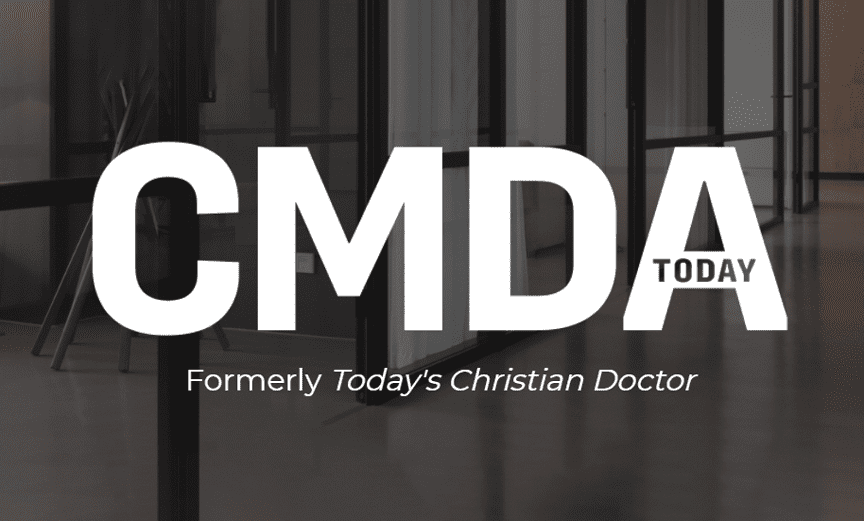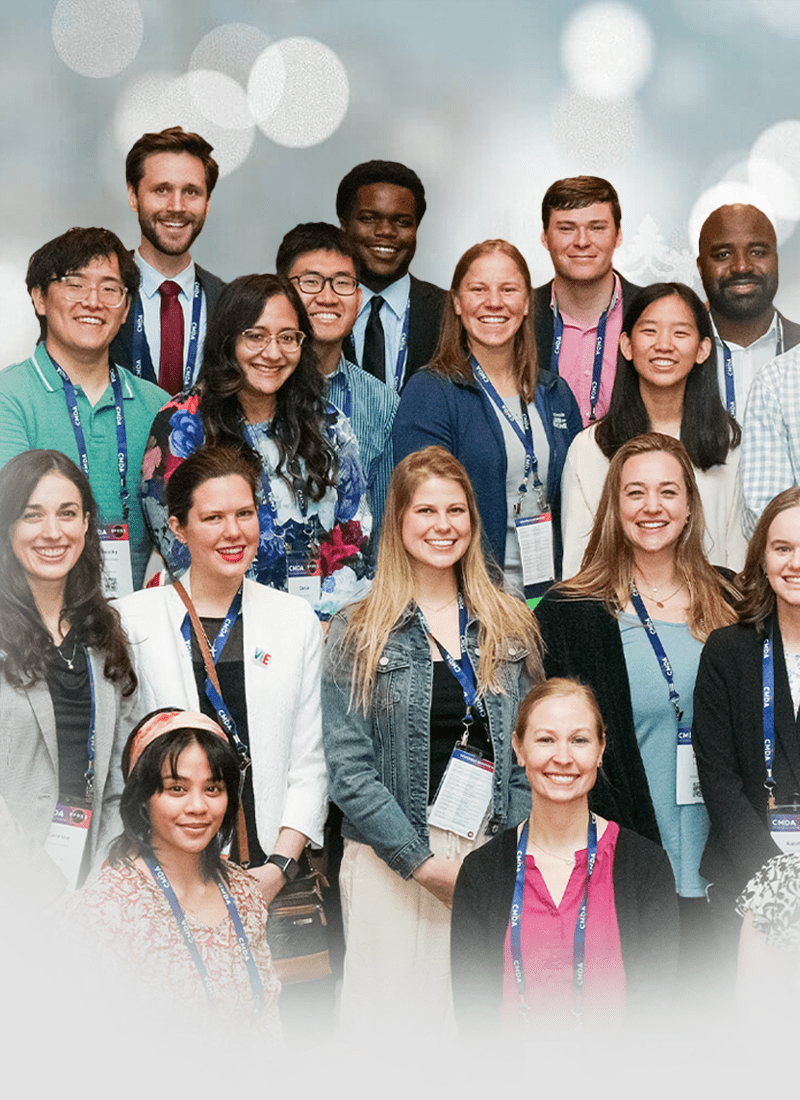
A Second Drug Wave is Coming: Marijuana
The first drug wave was the opioid epidemic. In 2016, more Americans died from drug overdoses (67,000) than during the entirety of the Vietnam War (58,200).1 The second and more insidious wave is coming—it’s the marijuana wave.
by James A. Avery, MD
I love going to the beach and body-surfing the waves. When my kids were young, I always warned them about the second wave. The first wave knocks you silly, making you less aware of the arrival of the second wave.
The first drug wave was the opioid epidemic. In 2016, more Americans died from drug overdoses (67,000) than during the entirety of the Vietnam War (58,200).1 The second and more insidious wave is coming—it’s the marijuana wave.
On April 11, 2018, Acreage Holdings, one of the largest marijuana corporations, announced John Boehner as its new spokesman. The Republican former Speaker of the House said in an interview, “Over the last 10 or 15 years, the American people’s attitudes have changed dramatically (towards the legalization of marijuana); I find myself in that same position.”2
Boehner is right. Sixty-four percent of Americans, including a majority of both Republicans and Democrats, want to legalize marijuana, according to an October 2018 Gallup survey.3 That’s the most since the pollster began asking the question in 1969. As of July 2018, 30 states, plus the District of Columbia, have legalized medical marijuana, while nine of those states (plus D.C.) also allow recreation-al marijuana.4
But does public opinion always reflect the truth of a situation? Is marijuana a beneficial medication? Is marijuana safe? Let’s dig deeper.
MARIJUANA: A BOTANY LESSON
Cannabis sativa is just a plant. Technically, it is an annual herbaceous flowering plant indigenous to Eastern Asia. It has been cultivated throughout recorded history and each part of the plant is harvested differently, depending on the purpose. The flowers (and to a lesser extent the leaves and stems) contain the psychoactive chemical compound, known as THC. As a drug it usually comes in the form of dried flower buds (marijuana), resin (hashish) or various extracts collectively known as hashish oil.
Hemp, a variety of the Cannabis sativa plant species that has little THC and therefore no hallucinogenic properties, has proven to be valuable to mankind. It was one of the first plants to be spun into usable fiber 10,000 years ago, and it can be refined into a variety of commercial items including paper, textiles, clothing, biodegradable plastics, paint, insulation, biofuel, food and animal feed.
MARIJUANA: A CHEMISTRY LESSON
The two main cannabinoids, or active ingredients, in marijuana are tetrahydrocannabinol, also called THC, and cannabidiol, or CBD. THC is the “psychoactive” ingredient; it is what produces the euphoria or high that comes from marijuana. CBD is not psychoactive, but it does appear to have a mild anti-anxiety effect. Interestingly, CBD lessens the psychoactive effect and psychotic side effects of THC.5 There are many other cannabinoids and some of them may prove to be of value, but the two key cannabinoids we know the most about are THC and CBD.
MARIJUANA: A HISTORY LESSON
The natural levels of THC and CBD in a typical Canna-bis plant were both under 1 percent until recently.6 Since CBD lessens the psychedelic effects of THC, some people speculate that marijuana in its original state was probably a relatively mild sedative or calming agent. This is based on records from India around 1000 to 2000 years BCE, when the Cannabis plant was celebrated as one of “five kingdoms of herbs … which release us from anxiety” in one of the ancient Sanskrit Vedic poems.7
However, the levels of THC in marijuana rose rapidly as investor money poured into improving the farming technology. Using powerful lights, selective breeding and special soils, the industry created a “new” marijuana. While the CBD stayed the same (under 1 percent), the average THC content in the new marijuana leaped to over 13 percent nationwide in 2015.8 And, in Colorado today, levels of THC are much higher as some plants push past 40 percent. That’s 10 to 30 times more potent than the marijuana of the 1960s and 1970s.9
Even in the Netherlands, where marijuana can be purchased in “coffee shops,” concern has grown about the potency. A Dutch government committee report in June 2011 recommended that Cannabis with more than 15 percent THC be labeled as a hard drug, putting it into the same category as heroin and LSD.10
MARIJUANA: IS IT A MEDICINE?
The National Academies of Sciences, Engineering and Medicine recently called on the federal government to support better research, decrying the “lack of definitive evidence on using medical marijuana.”11 The U.S. still classifies marijuana as a Schedule 1 Drug, putting it into the same class as heroin. Underscoring the federal government’s position, U.S. Secretary of Health and Human Services Alex Azar recently said there was “no such thing as medical marijuana.”12 His point was this: there is not enough research or evidence to support the use of marijuana as a beneficial drug.
Although some studies have been done, researchers lament that so little is known about how marijuana affects the human body and brain. It has not gone through the clinical trials all medications go through, and virtually no research has been done exploring potential adverse interactions with prescription and non-prescription medications.
In other words, at this time, one would be hard pressed to consider marijuana as a legitimate “medicine” since it has not passed through the regular channels required for medicine in the U.S.
POTENTIAL BENEFITS OR GOODS
However, some solid studies show marijuana helps with the treatment of chemotherapy-induced nausea and vomiting, as well as appetite stimulation due to wasting diseases like AIDS. Because of these two indications, two drugs containing synthetic THC, dronabinol (Marinol) and nabilone (Cesamet), have been approved by the U.S. Food and Drug Administration (FDA). These are pharmaceutical-produced, quality-controlled and dose-specific medications. Curiously, they have not sold well.
In June 2018, the FDA approved the first marijuana-de-rived drug, Epidiolex, for two rare forms of epilepsy. Unlike the synthetic medications, which contain THC, Epidiolex does not contain any THC. It is pharmaceutical-grade cannabidiol or CBD derived from the marijuana plant. The FDA considered many clinic studies before approving the medication. This approval should not be an endorsement of all CBD products, as most dispensary-grade CBD products are not well controlled or studied.13
In addition, there is another condition that is trending positively in studies: spasticity in multiple sclerosis. For other conditions, like pain, the evidence is weak. In chronic pain, only five out of 10 studies showed benefit from marijuana, and in neuropathic pain, only three out of six studies showed positive results.14
Finally, many other are conditions touted for medical marijuana, even though there is absolutely zero evidence. A good example is ALS. Despite multiple states including ALS on their list of approved illnesses for medical marijuana, there has been only one randomized clinical study and the results were unequivocally negative.15
Until proper studies are done, it would be beneficial for physicians to warn their patients about the marijuana hype. For instance, a study came out a few years ago showing that CBD (in doses 10,000 times of that found in the plant) reduced the size and growth of some brain tumors. You can guess the headlines: “Weed Cures Brain Cancer.”16
A 2018 study in the Journal of Clinical Oncology found that 46 percent of cancer doctors say they’ve recently recommended medical marijuana to their patients, although 56 percent of them admitted they did not have sufficient knowledge to do so. This is irresponsible behavior by physicians who are kowtowing to their even less knowledgeable patients.17
RECREATIONAL MARIJUANA
While marijuana as a medicine is clearly controversial, recreational marijuana is unequivocally problematic. Today’s culture has made it almost impossible to even talk about limiting its availability to adults. At the same time, advertising campaigns, conducted by powerful corporations and lobbyists, work to reduce the public’s perceived risk.
Because of these lobbying efforts, many people view marijuana as a weak hallucinogenic or mild anti-anxiety drug. Some even see it as a safe natural substance that can even promote good health.18 One hospital in Pueblo, Colorado reported in July 2018 that nearly half the babies tested over a one-month period had marijuana in their systems. Vicky Houston, of Woodland Park, saw nothing wrong with using marijuana while pregnant. “I believe it’s beneficial, I don’t think it’s toxic in any shape or form,” she told a local television newsperson.19 These claims can be easily refuted scientifically, but this false message is dominating the airways.
Corporations, like Acreage, following the game plan of the tobacco companies, are actively seeking profits by hiring big names like Boehner with apparently no thought to the long-term effects of what they are promoting and to whom. For instance, there are more marijuana dispensaries in Denver than Starbucks and McDonald’s combined, and most are located in low-income neighborhoods.20
As mentioned earlier, today’s marijuana is a potent, highly hallucinogenic drug, so recreational use is fraught with danger. Only a few credible studies have been done (and hardly any with THC above 15 percent), but they provoke concern about the new marijuana. The higher the THC concentration, the higher the likelihood of first episode psychosis and schizophrenia.21,22
Heavy marijuana use can damage brain development in youth ages 13 to 18. The 2015 Canadian Centre on Substance Abuse study confirmed the direct link between cannabis use and loss of concentration and memory, jumbled thinking and early onset paranoid psychosis.23 Dr. Phil Tibbo, one of the leaders in the medical field and initiator of Nova Scotia’s Weed Myths campaign targeting teens, has seen firsthand evidence of what heavy use can do as director of Nova Scotia’s Early Psychosis Program. His brain research shows that regular marijuana use leads to an increased risk of developing psychosis and schizophrenia, effectively exploding popular and rather blasé notions that marijuana is “harmless” to teens and “recreational use” is simply “fun and healthy.”24 Multiple researchers have all come to the same conclusion: the younger the brain, the worse the effects in both the short-term and long-term.25,26
Now, let’s look at some of the myths associated with marijuana:
MYTH #1: MARIJUANA IS NOT ADDICTIVE.
Substance addiction experts would not agree with such a statement: marijuana is definitely addictive. However, it is less addictive than other substances, but current studies (done with lower potency marijuana) estimate that one out every nine adults and one out of every six juveniles who use marijuana will, at some point, meet the DSM criteria for a substance use disorder.27,28
MYTH #2: NO ONE HAS EVER OVERDOSED ON MARIJUANA.
While it is true that marijuana overdoses do not cause death, it can cause mental impairment and distressing emotional states, such as paranoia, hallucinations and psychosis. Overdoses can also cause arrhythmias, lethargy, clumsiness, dry mouth, dizziness and hypotension.29
MYTH #3: NO ONE HAS EVER DIED FROM MARIJUANA.
Marijuana has and will kill people in the same way tobacco and alcohol have killed people. While people addicted to heroin decline visibly within a few years, people addicted to tobacco and alcohol don’t typically experience the negative effects for about 20 years. In a similar way, frequent users of marijuana will decline gradually, physically and emotionally. Lung diseases like chronic bronchitis and chronic obstructive pulmonary disease, schizophrenia, anxiety, depression and chronic apathy have all been reported in frequent users.30
Marijuana will cause fatal accidents. From 2010 to 2014, marijuana-related traffic deaths increased 92 percent in Colorado, while all traffic fatalities in the same period rose only 8 percent.31 In addition, marijuana deaths and injuries hit an all-time time in 2015 in Colorado as marijuana was named as the culprit in fatal fires, psychotic killings, explosions and suicides.32
MYTH #4: WE CAN PROTECT OUR YOUNG PEOPLE AND LIMIT MARIJUANA TO ADULTS.
Surely our experience with cigarettes, alcohol and prescription drugs would tell us otherwise when it comes to teens; overall accessibility and availability lead to an increase in teen usage. And, in the May 2018 issue of Pediatrics, researchers disturbingly found that Cannabis use is on the rise among adults with children in the home.33
CONCLUSION
This second drug wave has the potential to devastate our country. As a physician, I worry that the next generation is going to grow up in a place where pervasive marijuana use is accepted and possibly encouraged. If that happens, we will be seeing the deleterious effects of marijuana on the brain and body play out in our offices, while society will see the harmful effects played out in our streets, schools, churches, neonatal units, hospitals, and homes.
MARIJUANA IN GENESIS
In the beginning, God created Cannabis sativa and it was good. As Christians, we believe the story of Genesis that God created everything—man, cows and marijuana; it was all declared good (as written throughout Genesis 1). But the fall happened and man began using creation for selfish and sinful purposes. For example, fire is good. It keeps us warm at night, but many homes, businesses and lives have been lost to arson. Since the Bible tells us that humans were given dominion over all the earth and told to subdue it, our mandate is to use everything our Creator has given us to its fullest potential and greatest good—to God’s glory.
RECREATIONAL MARIJUANA: A CHRISTIAN PERSPECTIVE
It is my impression that most Christians base their opin-ions on marijuana in large part on their views regard-ing alcohol. So, let’s discuss the two dominant Christian perspectives on alcohol. Many Christians choose not to drink alcohol at all. They consider the harmful effects of alcohol on indi-viduals and society—liver failure, divorce, physical and sexual violence, car accidents, etc.—and decide to ab-stain. This understandable position is strengthened by Romans 14:30, which calls on us to consider the effects of our actions on weaker brothers, and 1 Corinthians 6:12, which cautions us to not be mastered by anything. Clearly, teetotaling Christians could apply the same principles to recreational marijuana. Other Christians, however, choose to drink. They may like a glass of wine with dinner or a social drink at a party. Most in this camp will stress their awareness of alco-hol’s dangers and acknowledge the biblical prohibitions against drunkenness. This is also an understandable po-sition and is strengthened by Galatians 5:19-21, 1 Timothy 3:3 and Titus 1:7, which seem to permit alcohol as they only label drunkenness as sin. When Paul tells us “to not be drunk with wine,” he is not arguing against wine, he is arguing against drunkenness. Therefore, Christians who drink might think they can apply the same principle to marijuana: I will smoke a joint daily with dinner but I will avoid getting high. (I am assuming it is legal in their state as Christians do have an obligation to submit to govern-ment edits as directed in Romans 13). However, there are some serious problems with this position:1. The moderate use of marijuana is rare. According to Dr. Kevin Hill, MD, an assistant professor of psychia-try at Harvard’s McLean Hospital and a marijuana expert, “Most people who use marijuana either use it rarely or regularly, with just a few in the middle. People either really like marijuana and use it very often or they are indifferent to it … This is different than alcohol, where the distribution of use is spread out fairly evenly, from rarely to daily to just about everything in between.”a
2. Getting high is the sole intent of marijuana. In other words, the thing we are forbidden by Scripture to do with alcohol is the only thing we can do with marijuana recreationally. It’s not like marijuana pairs well with beef.
Therefore, in conclusion, I do not believe recreational marijuana has a place in the life of a believer. aHill, Kevin, Marijuana: The Unbiased Truth About the World’s Most Popular Weed, page 67, Hazelden Publishing.
MEDICAL MARIJUANA: A CHRISTIAN PERSPECTIVE
What about medical marijuana? I believe Christians can ex-plore the medical uses of the compounds in marijuana within established medical-legal bounds. As previously mentioned, our medical knowledge regarding marijuana is thin. Chris-tians affected by diseases that may benefit from marijuana already have access to two marijuana-based prescription medications. As a hospice physician who has seen some of the worst cases of suffering, I can tell you unequivocally that we have more medications today than ever in the history of the world to reduce pain and suffering. Maybe marijuana will eventually fulfill its promise and help mankind as a medi-cine, or maybe its many uses as hemp are its greatest good. The jury is still out and wisdom dictates patience until some substantial studies come out.
BIBLIOGRAPHY
1 https://www.cdc.gov/drugoverdose/data/overdose.html
2 https://www.nytimes.com/2018/04/11/us/politics/boehner-canna- bis-marijuana.html
3 http://news.gallup.com/poll/221018/record-high-support-legaliz- ing-marijuana.aspx
4 http://www.ncsl.org/research/health/state-medical-marijuana- laws.aspx
5 National Academies of Sciences, Engineering, and Medicine. The Health Effects of Cannabis and Cannabinoids: Current State of Evidence and Recommendations for Research. Washington, DC: The National Academies Press; 2017.
6 Cort, B, Weed Inc., Health Communications, Deerfield Beach, Florida, 2017.
7 “Marihuana: The First Twelve Thousand Years” (Springer, 1980). 8 Cort, B, Weed Inc., Health Communications, Deerfield Beach, Florida, 2017.
9 https://www.cnn.com/2013/08/09/health/weed-potency-levels/index.html
10 https://universonline.nl/2011/06/27/garretsen-qualify-strong-cannabis-as- hard-drugs
11 National Academies of Sciences, Engineering, and Medicine. The Health Effects of Cannabis and Cannabinoids: Current State of Evidence and Rec-ommendations for Research. Washington, DC: The National Academies Press; 2017.
12 https://www.daytondailynews.com/news/local/such-thing-medical-mari-juana-health-secretary-says-dayton/La8dTJgu6nF3ojSc1z6yPO/
13 https://jamanetwork.com/journals/jama/article-abstract/2661569. In this 2017 study published in JAMA researchers tested 84 products purchased from 31 different online CBD sellers. Roughly seven out of 10 items had different levels of CBD than what was written on the label. Of all of the items they tested, roughly half of the items had more CBD than was indicated; a quarter had less. And 18 of the samples tested positive for THC, despite it not being listed on the label.
14 Koppel BS, Brust JC, et al. “systemic review: Efficacy and safety of medical marijuana in selected neurologic disorders: Report of the Guideline Development Subcommittee of the American Academy of Neurology,” Neurology 82, no.17 (2014): 1556-63.
15 Weber B, Goldman B, et al. Tetrahydrocannabinol for cramps in ALS: a randomized, double-blind crossover trial,” Journal of Neurological Neuro-surgery Psychiatry 81 (2010): 1135 – 40.
16 Here is an internet article that tries to appear more scientific than the headine I listed in the article: http://www.collective-evolution.com/2015/04/15/the-us-finally-admits-cannabis-kills-cancer-cells/17 llana Braun, M.D., Boston; Andrew Epstein, M.D., et al. “Cancer Docs Seek More Study of Medical Marijuana,” Journal of Clinical Oncology, published online May 10, 2018.
18 https://www.psychologytoday.com/us/blog/almost-addicted/201301/mari- juana-is-all-natural-so-whats-the-problem
19 http://denver.cbslocal.com/2016/07/11/marijuana-pregnant-thc-positive-babies-colorado/
20 https://www.coloradopotguide.com/colorado-marijuana-blog/2015/de- cember/26/more-dispensaries-in-colorado-than-mcdonalds-starbucks-combined/
21 https://www.mdedge.com/psychiatry/article/97219/schizophrenia-other- psychotic-disorders/high-thc-cannabis-use-tied-higher
22 American Friends of Tel Aviv University. (2017, April 26). Cannabis use in adolescence linked to schizophrenia: Psychoactive compound in cannabis may trigger the brain disorder, researchers say. ScienceDaily. www. sciencedaily.com/releases/2017/04/170426124305.html
23 R Douglas Fields. (2017, October 9) Link Between Adolescent Pot Smoking and Psychosis Strengthens: Research presented at a Berlin psychiatric conference show teenage cannabis use hastens onset of schizophrenia in vulnerable individuals. Scientific American. Retrieved January 4, 2018 from https://www.scientificamerican.com/article/link-between-adolescent-pot-smoking-and-psychosis-strengthens/
24 http://www.ccdus.ca/Resource%20Library/CCSA-Effects-of-Cannabis- Use-during-Adolescence-Report-2015-en.pdf
25 Cookey J, Bernier D, Tibbo P. (2014) White matter changes in early phase psychosis and cannabis use: an update and systematic review of diffusion tensor imaging studies. Schizophrenia Research 2014 Jul; 156(2-3):137-42.
26 https://theconversation.com/marijuana-at-school-loss-of-concentration- risk-of-psychosis-90374
27 Anthony JC, Warner LA, et al, “Comparative Epidemiology of Dependence on Tobacco, Alcohol, Controlled substances, and Inhalants: Basic Findings from the National Comorbidity Survey,” Experimental and Clinical Psychopharmacology 2, no.3 (1994): 244-68
28 Lopez-Quintero C, Perez de los Cobos J, et al, “Probability and predictors of transition from first use to dependence on nicotine, alcohol, cannabis and cocaine: Results of the National Epidemiologic Survey on alcohol and Related Conditions (NESARC), “Drug and Alcohol Dependence, nos. 1-2, (May 2011): 120-130.
29 https://drugabuse.com/library/marijuana-overdose/
30 Volkow, ND, Baler, WM, et al, “Adverse Health Effects of Marijuana.” New England Journal of Medicine 370 (2014): 2219-27.
31 https://www.denverpost.com/2017/08/25/colorado-marijuana-traffic-fatalities/
32 https://www.scribd.com/document/361299028/The-Legialization-of-Marijuana-in-Colorado-The-Impact-Volume-5-October-2017
33 Renee Goodwin, Keely Cheslack-Postava et al, “Cannabis use up among parents with children in the home”, Pediatrics, published on-line May 14, 2018.
 JAMES A. AVERY, MD, is National Medical Di-rector for Diversicare Healthcare and Visiting Assistant Professor of Medicine at the University of Virginia. Board certified in internal medicine, hospice and palliative and pulmonary medicine, Dr. Avery was awarded the Lillian B. Wald Award for his hospice and palliative care work in New York City and the Roger C. Bone Award for National Leadership in End-of-Life Care. Dr. Avery was named “One of the 50 Most Influential Physician Executives” by Modern Physician magazine. He serves as an elder at Trinity Presbyterian Church. Dr. Avery lives in Charlottesville, Virginia with his wife Jan. They have three children and one grandchild. His children’s book, How’s the Water, Girls? was published by Covenant Books in 2018 and is available online at Amazon and Barnes & Noble.
JAMES A. AVERY, MD, is National Medical Di-rector for Diversicare Healthcare and Visiting Assistant Professor of Medicine at the University of Virginia. Board certified in internal medicine, hospice and palliative and pulmonary medicine, Dr. Avery was awarded the Lillian B. Wald Award for his hospice and palliative care work in New York City and the Roger C. Bone Award for National Leadership in End-of-Life Care. Dr. Avery was named “One of the 50 Most Influential Physician Executives” by Modern Physician magazine. He serves as an elder at Trinity Presbyterian Church. Dr. Avery lives in Charlottesville, Virginia with his wife Jan. They have three children and one grandchild. His children’s book, How’s the Water, Girls? was published by Covenant Books in 2018 and is available online at Amazon and Barnes & Noble.
This Feature Story Appears in:
Other Recent CMDA Today Articles:
- « Previous
- 1
- …
- 3
- 4
- 5





